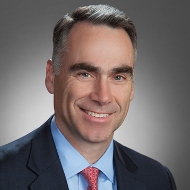By Ted Caddell
In a bid to win D.C.’s approval of its takeover of Pepco Holdings Inc., Exelon last week more than doubled the amount of customer credits it is offering to $33.75 million from $14 million.
The offer to increase the “Customer Investment Fund” came on the heels of its success in New Jersey, where Exelon received full approval from the Board of Public Utilities, and Delaware, where it reached a settlement with the staff of the Public Service Commission and other parties.
Those advances didn’t come cheap, though. The company originally offered $29 million in customer credits and other incentives to New Jersey customers but later upped that to $62 million. Their offer to Delaware started out at $17 million in direct customer credits, but the latest settlement offer — still to be acted on by the PSC — is $49 million in credits along with other incentives.
Not Convinced
Despite its improved offer, Exelon hasn’t won the support of D.C.’s customer advocate.
“The ‘pot sweetener’ is a factor that needs to be evaluated along with other factors in the case to determine if the proposal meets the public interest standard,” People’s Counsel Sandra Mattavous-Frye told RTO Insider. “By no means does this new proposal to increase the CIF end the matter.”
The company also enhanced its commitment to increasing reliability, vowing to meet or exceed the D.C. PSC’s existing standards “without increasing Pepco’s forecasted reliability spending.” If Pepco does not achieve the reliability performance target, it would be subject to penalties of up to $5.6 million annually, the company said.
Mattavous-Frye said that Exelon had failed to address reliability concerns earlier.
“Reliability has been a focus for [the Office of the People’s Counsel] for the past 10 to 12 years,” she said Friday. Exelon’s “new reliability commitment is vastly different than their position from the beginning of the case that they could not meet the reliability standard,” she said. “Therefore, OPC is carefully evaluating the details that support this new commitment to ensure it is viable.”
Exelon CEO Chris Crane said the latest offer shows that the company is paying attention to the needs of the District. “We’ve listened to the feedback of stakeholders in the District of Columbia and have substantially enhanced our proposed package,” he said in a statement.
Delay Likely
The negotiations with state regulators are taking a toll on Exelon’s timetable for approval.
Initially, Exelon said that it anticipated closing the acquisition in the second quarter. Exelon spokesman Paul Adams said last week that it now appears the deal may not be consummated until the third quarter.
The D.C. PSC is scheduled to hold evidentiary hearings from March 30 through April 8, which would mean a decision in late July or early August, Mattavous-Frye said. She said talks between parties continue but, “at this point, it is not clear if a settlement will be reached in this case.”
Maryland Remains
In addition to D.C., Exelon still must win support from regulators in Maryland.
Adams said the company is prepared to up its offer to there too.
“During the hearings before the commission in Maryland, Exelon CEO Chris Crane made clear that Exelon would accept, as a final resolution of the matter in Maryland, a settlement on terms equivalent to the settlement in New Jersey” prorated for the number of customers, Adams said.
“The settlement in Delaware is equivalent to the New Jersey settlement, and both are equivalent to what we have offered in D.C.,” Adams said. He did not say when a new offer to Maryland would be presented.
Exelon’s initial offer of customer credits for Maryland was $40 million. The state’s PSC staff has recommended $167 million in credits.
The state’s Office of People’s Counsel has urged the PSC to turn down the deal as it stands, calling the benefits Exelon is offering “either non-existent or woefully deficient.”







